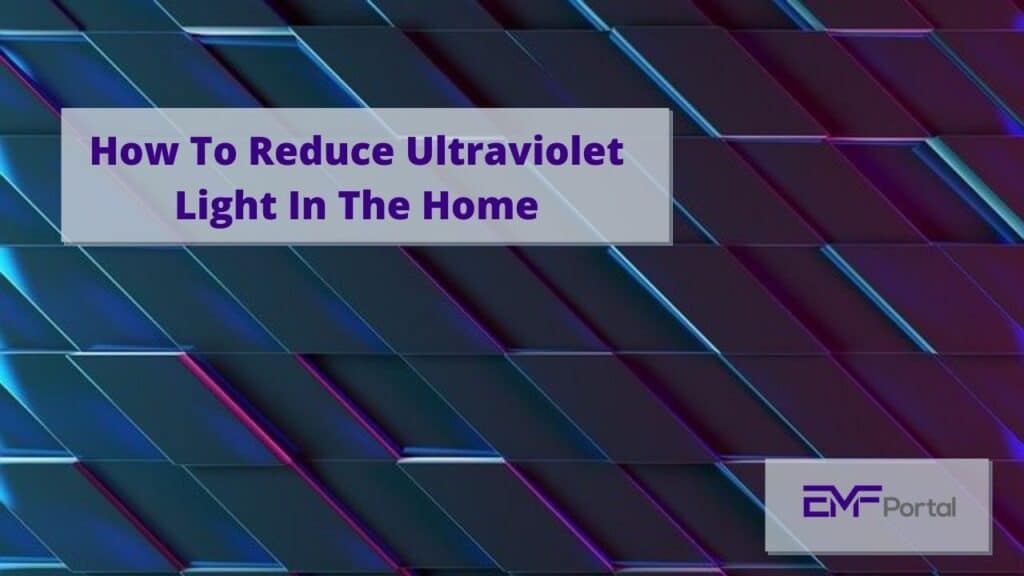
The public is now more aware of the impact of ultraviolet (UV) light on our skin. However, we usually think that UV light only comes from sunlight and we only need protection outside.
One of the best ways to protect yourself from UV light indoors is to use UV-blocking films on your windows. It ensures that no damaging UV light can penetrate your skin without compromising on natural light from entering the room.
Everyone has experienced sunburn from a hot summer day, but UV does not only hit the surface of the skin. It can also penetrate the dermis layer and is a primary cause of skin cancer. If you are interested in knowing more about UV light and how to reduce your exposure at home, keep reading!
What Is UV light?
Ultraviolet light, also known as UV radiation, forms part of the electromagnetic spectrum. The main source of UV light in our daily life is the sun.
We cannot see UV rays as their wavelengths are much shorter than visible light. However, even if the eyes cannot see UV radiation, your skin can definitely feel it.
UV radiation can be classified into two different categories:
- UVA
- UVB
While tanning and sunburn are both caused by UVA and UVB, only UVA can penetrate the deeper layers of your skin.
When it reaches your skin cells, it can cause damage to the DNA in the cells and thus increase the risk of developing skin cancer.
Also, UVA can result in wrinkles and dark spots, leading to premature aging. In contrast, UVB is only absorbed by your epidermis (surface layer of your skin).
The different effects between the two is because of their wavelength. UVA has a longer wavelength than UVB, and therefore, can enter the dermis (the layer beneath the epidermis).
While both UV rays can be reflected back from some surfaces, such as water, UVA and UVB can go through a glass window. Therefore, UVA rays can still cause damage to your skin even if you are indoors.
To add to our disadvantage, 95% of UV rays coming from the sun is from UVA radiation. So, our risk of developing skin cancer should not be undermined.
Source Of UV Light In Your Home
If you think you are protected from UV light when you are indoors, you need to think twice! Even if we do not realise it, UV light can enter our home through our window panes.
To brighten up the house, we want to pull back the curtains and let natural light in. While it can help the room feel fresh and bright, sitting next to the window on a sunny day will increase your skin exposure to both UVA and UVB rays.
According to NASA in 2010, UV radiation that is reaching the Earth from the Sun has greatly increased during the last 30 years.
Yet it should be noted that most of the increase was found in the middle and high latitudes. The main culprit for the increase in UV radiation is the depletion of the ozone layer—a natural colorless gas that protects the Earth from UV rays.
The depletion of the ozone layer is caused by an increase in pollution in our atmosphere. With the general increasing trend of UV radiation in our atmosphere, it is best to start taking precautions in reducing the amount of damaging UV rays in your home!
How To Reduce UV Light From Your Home?
Fortunately, there are some tips and solutions that you can follow to make sure that your home has a lower exposure of UV light.
1. UV Blocking Window Films
For maximum protection, you can stick UV-blocking window films on glass windows. They can block up to 99% of UV radiation without stopping natural light from entering the room.
You should note that it may reduce the intensity of natural light that usually gets into your room, meaning that your room will be slightly less bright.
But, another benefit that those films provide is that they also reduce the glare that sunlight can cause. Also, the room can even feel cooler as the hot sunlight is partially blocked from getting into your house.
However, installing UV blocking films on all windows in your house can be an expensive project. A more budget-friendly alternative are window shades.
2. Window Shades
Being very inexpensive, window shades are usually the favorite tip for several people. You can choose any style you want, from woven wooden ones to Roman or cellular shades.
However, you should choose shades that also provide a high UV protection. There are also some solar shades that are specifically designed to block up to 99% of UV radiation.
Unfortunately, the opacity of the shades are usually linked to the UV shielding capacity of the shades. A lower opacity shade will block more UV rays than a high opacity one.
But, a lower opacity shade will also prevent more natural light from entering the room.
3. Tinted Windows
If you want a permanent solution to stopping UV light from entering your house, you can replace the usual transparent window glass with a tinted one.
Some tinted glass windows with low emissivity or Low-E are coated with thin layers of metallic oxide. They can be either hard-coated or soft-coated with oxides.
The metallic oxide layers reflect outside UV light, stopping them from passing through the glass and going indoors. Another advantage of Low-E windows is their insulating characteristic.
They make your house cooler in summer and warmer in winter. However, Low-E glass is more expensive than normal window panes and will cost more than installing window shades and UV-blocking window films.
4. Wear Sunscreen Indoors
Yes, we can apply sunscreen even if we will be indoors the whole day. Nowadays, there are sunscreens with SPF 50 and broad-spectrum capacity.
The term “broad spectrum” means that both UVA and UVB are blocked. You can now find sunscreen of different consistencies, from thicker creams to oils or even in makeup.
Wearing sunscreen indoors will provide topical protection to your skin that directly shields you from UV radiation. The best part is that one tub of sunscreen is way cheaper than changing your windows!


